There are good, old-fashioned, tried-and-true America traditions, and then there are the good, old-fashioned, quaint, quirky and uniquely Alaskan traditions. Here are a few of the most interesting traditions inspired by Alaska life in the “Last Frontier”.
“Sunsational” Alaska Solstice Celebrations
Around most of the country, the Summer and Winter Solstices come and go like any other days, much like the sun in most America locales rises and sets consistently as if guided by a finely-tuned clock. At the top of the tilted globe in the northern climes of Alaska, however, the sun plays a significantly different and important role in everyday life.
The sun is more than a presence in the sky here; in Alaska, it’s a personality, sometimes warm and giving, sometimes fair-weathered and fleeting. It provides heat and light, often in extreme measures. Then it literally disappears for long stretches, robbing the coldest days of winter of the luxuries of brightness and warmth. The sun’s existence leads Alaskans to practically worship the giant glowing orb, or at least celebrate it, particularly on the two annual Solstice dates, which are unwritten statewide holidays.
When the Summer Solstice arrives on June 20, the sun is an ever-present, inescapable ball of brightness dangling across most of the state. Many residents rejoice on this day, soaking up every second of those sun rays, knowing that the very next day triggers six months of declining sunlight – disappearing first in seconds, and later in large, tragic chunks of whole minutes. All in Alaska know that the Midnight Sun will be a distant memory come fall, so on the Summer Solstice, community parties, late-night hikes and backyard barbecues, and all-night fishing sessions are the norm all around Alaska.
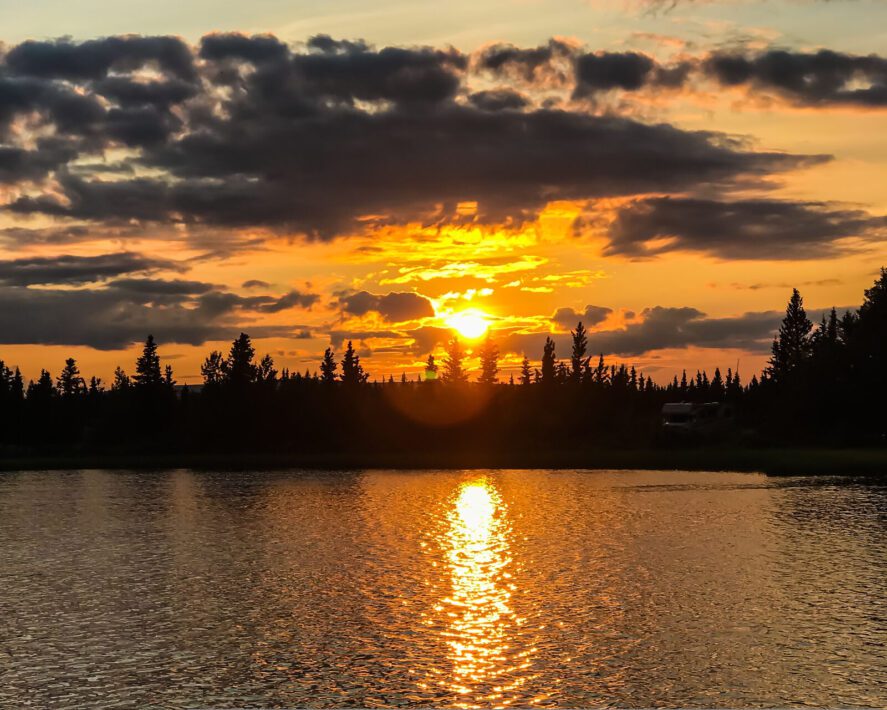
The Midnight Sun in Fairbanks at 11:04 PM on July 5 (Bill Wright/Explore Fairbanks)
In contrast, the Winter Solstice on December 20 is the darkest day across Alaska. It’s especially painful since it occurs on what is typically a cold winter day. But the date’s arrival is also cause for frolicking festivities. It’s not unusual for communities and businesses to host outdoor and indoor Winter Solstice parties, while families and friends gather around bonfires; indoors, yogis offer thanks and welcoming wishes in sweaty sun salutations. They know, when this day passes, precious sunlight will begin returning a sliver at a time, bringing brightness to winter and a guiding light to warmer days ahead.
Summer or winter, pragmatic Alaskans always find the positives in Alaska’s brightest and darkest days. The intense summer sun helps plants grow to epic dimensions and allows Alaskans, and animals, to play, work and harvest outside comfortably at all hours, often to exhaustion. Meanwhile, dusky winter days and black winter nights allow northern lights to dance brightly across the sky; the lack of sunlight and sun-generated warmth give Alaskans a legitimate excuse to hibernate, if only for a little bit.
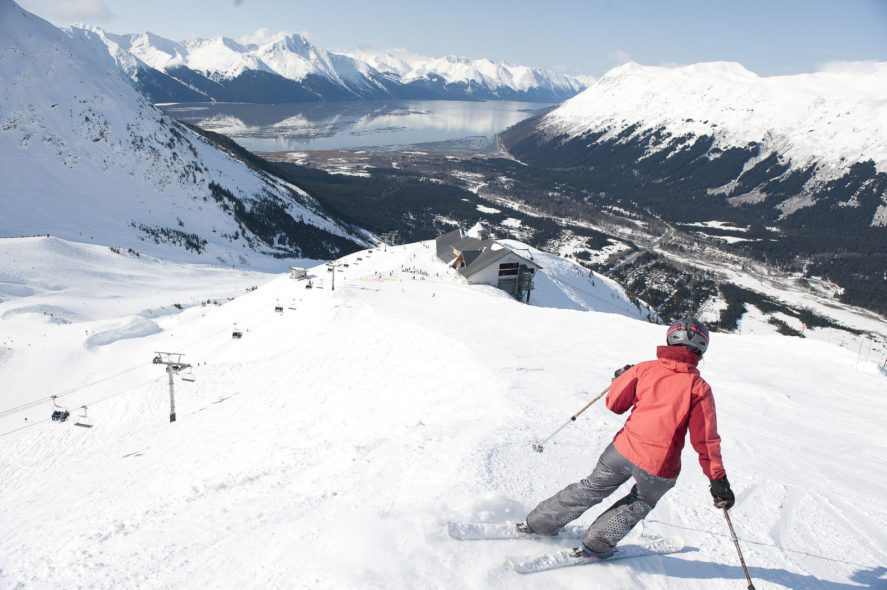
“Dividend Day” in Alaska
Speaking of unofficial statewide holidays, every fall, all qualifying Alaska residents get a bankroll boost when that year’s Alaska Permanent Fund Dividend (PFD) is distributed across the resident population, dropping around $1,000, or as much as more than $2,000, into their bank accounts. Some Alaskans stash it in their savings accounts, others pay bills, other splurge on electronics, snow machines and vacations, and a few foolhardy blow it all in one night. Most do a mix of all of the above.
While every Alaskan loves this legendary “free money” and finds his or her own way to use the PFD check, each also has a strong opinion on how the state should spend the money in the Alaska Permantent Fund. The fund was originally created based on oil revenues in the early ‘80s and has since grown into billions through investments and Alaska’s oil and gas production. A percentage of that fund’s income is annually rolled out to the residents. The first PFD check of exactly $1,000 arrived in 1982. It’s been a roller-coaster of high and low payments and a political hot potato ever since.
Some claim the payout is a birthright, arguing about the way the payments are computed, and fuming that recipients are being shortchanged. Meanwhile, some contend that residents shouldn’t receive a cent and that the fund should cover needed statewide services instead. Some minds land in a middle ground, where residents and government each take proportionate windfalls. The conversation alone can create instant arguments among family and friends. And the trajectories of many political careers have risen meteorically or crashed dramatically based on a PFD stance.
For now, PFD Day will continue creating a vibe around Alaska that’s akin to Black Friday, Small Business Saturday, Cyber Monday and a Christmas stocking filled with cash, all mixed into one.
Fill Up the Freezer!
Alaska has always been the land of hunters and gathers who feel a primitive urgency and anxiety of always having enough food to survive. That condition and tradition continue today, from those living subsistence lifestyles in Bush Alaska to city residents with easy access to grocery stores and online ordering.
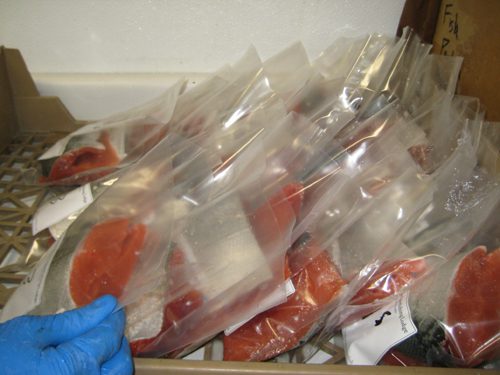
While much of the world is increasingly connected through technology, many Alaskans still feel isolated and (whether fueled by paranoia or preparation) some feel just one logistical hiccup or natural disaster away from suddenly not having enough food available. So Alaskans are constantly stocking up, filling their pantries, freezers and fridges in a range of ways.
Those living in smaller towns (where grocery prices are extremely high and availability is never guaranteed) and those living off the grid entirely, hunt, fish and gather from the land, make use of every part of their harvest, and stash away sustenance through freezing, brining, pickling and other food-storage methods. Many take advantage of Alaska’s generous sun and fertile soil to fill gardens and greenhouses with fresh produce. Some living on the roadway or in travel hubs for flights or ferries make special shopping trips for out-of-town neighbors. And while urban Alaskans have it easier with more stores and fairer prices, they still like to stock up for that a rainy or snowy Alaska day. They buy super-sized portions of staples and snacks at big box and surplus stores, and also max out on salmon dip-netting ventures and berry picking trips.
While most Alaskans share this fill-the-freezer mentality, they also share another quality: sharing. Most wouldn’t think twice about breaking into their bounties to take care of elders, neighbors and those in need. And one of the great joys of Alaska life is giving a fresh fish filet or some warm blueberry muffins to good friends.
Finding Joy in the Coldest of Cold
When it gets cold in Alaska – like real cold, like 40-below cold – strange things start happening. Vehicles don’t start. Unbreakable things break. Businesses and schools close. And Alaskans start getting a little stir crazy.
Most spend as much time inside as possible, waiting out the worst of the cold, in the warmth. But there’s only so much cabin fever some can take and whether it’s a source of pride, toughness, stubbornness or just plain craziness, most Alaskans don’t let the cold keep them indoors for long. Eventually, these hearty souls bundle up and venture outside, for a snow machine ride, a cross-country ski or a frosty walk with a friend or bootied-and-sweatered canine. They also love showing the world how cold it is while they’re playing outside, filling social media feeds with selfies of frosty faces, ice-crusted facial hair, and swimwear poses next to outdoor digital thermometers posting big numbers with a minus sign in front of it.
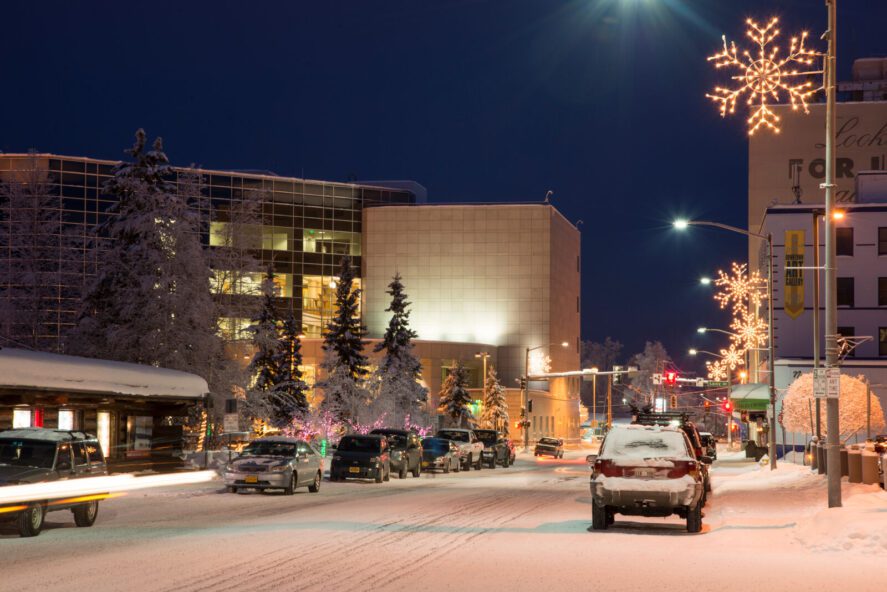
Snow blankets Fairbanks, Alaska as winter season settles in. (Sherman Hogue/Explore Fairbanks)
“Spring” Flings from the Iditarod to the Nenana Ice Classic
In March, when winter begins to wane and signs of spring start to show around Alaska, residents channel their excitement into following two of the state’s oldest and beloved winter sporting traditions: the Iditarod Trail Sled Dog Race and the Nenana Ice Classic.
The Iditarod sleddog competition is arguably the world’s most famous dogsledding race, and every edition of this “doggie drama” plays out differently. Sometimes, it’s a historic blowout by a team of superstars, sometimes it’s a finish-line showdown between two musher rivals, and sometimes an unknown ingenue racer emerges to claim the title. Two factors that play into every race: Alaska’s unforgiving and unpredictable weather and 900-plus-miles of tough trail terrain. And another Iditarod constant: the undivided attention of race fans across Alaska and the world. One day after the big and boisterous ceremonial Iditarod race start in downtown Anchorage on the first Saturday of March, the race to Nome officially begins. And for the next week-plus seemingly every Alaskan, and thousands of fans around the world, begin refreshing their browsers to watch the race play out and discuss the race among one another until the final team crosses the finish line at the burled arch in downtown Nome.
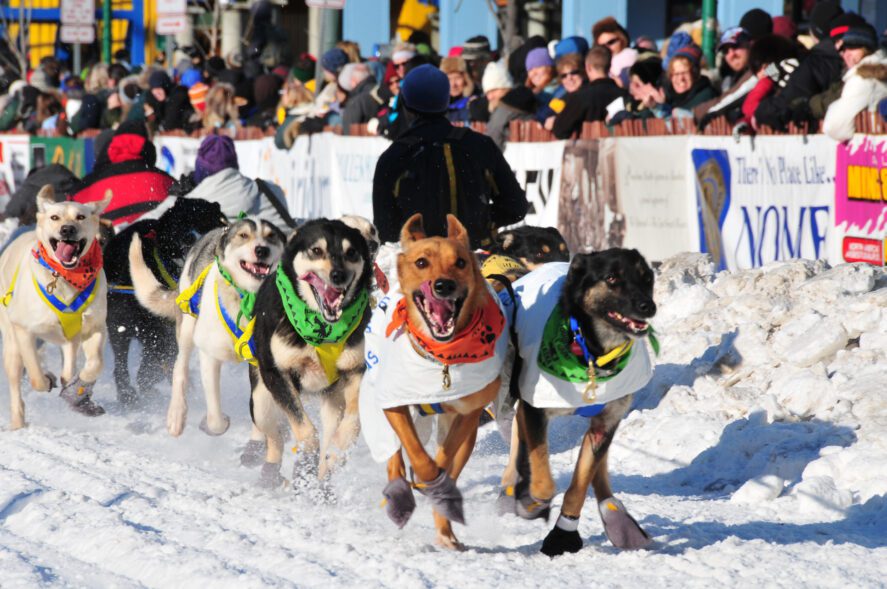
Alaska’s Iditarod Sled Dog Race (Rebecca Coolidge/Visit Anchorage)
Another “spring fling” event in Alaska is the Nenana Ice Classic. This unusual Alaska tradition was created over a century ago and brings out the competitive nature among thousands of Alaskans. The concept is simple: predict the moment (month, day, hour and minute) that enough ice moves on the Tanana River to tip the iconic tripod which stops the clock set on the nearby banks of the Interior town of Nenana. At stake in the Nenana Ice Classic is upwards of $200,000 of cold cash. Paying $2.50 a ticket, Alaskan contestants make their predictions based on numerous factors: the severity of this year’s winter’s weather, the river’s officially measured ice depth, past winning times and dates, and personal lucky numbers. It’s a guessing game and an Alaska tradition unlike any other.
Honoring a Alaskan Tradition of Exploration
Alaskans continue to honor the cherished tradition of exploration which led to the creation of the 49th state in 1959. They love traversing the state to explore new places or hang out at old favorite locations, seeking adventures, relaxation or just get a change of scenery – whether that’s dense woods, alpine air or sea breezes.

Wilderness Sea Kayaking Adventure
For all Alaskans, these in-state “staycations” are certainly about the journey, but are also all about the destination. Many Alaskans own cabins and travel to them year-round, as often as possible even if they are accessible only by snowmachine, boat, ATV or even plane. Some Alaskans take their vacation homes with them in the form of decked-out RVs, travel trailers, peppy pop-ups, and comfy camp vans. Others pack their weekend homes on their backs or in the back of their vehicles in the form of tents. No matter where they’re going and for how long, Alaskans love exploring Alaska. Pro tip for all visitors to Alaska: Ask an Alaskan about his or her favorite outings and destinations and why it’s their favorite. Just prepare to hear a different destination and rationale from each
